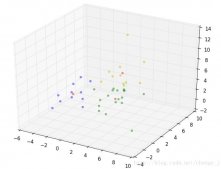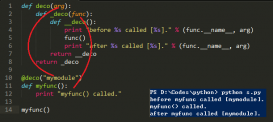本文实例讲述了python中黄金分割法实现方法。分享给大家供大家参考。具体实现方法如下:
|
1
2
3
4
5
6
7
8
9
10
11
12
13
14
15
16
17
18
19
20
21
22
23
24
25
26
27
28
29
30
31
32
33
34
35
36
37
38
39
40
41
42
43
44
45
46
47
48
|
''' a,b = bracket(f,xStart,h) Finds the brackets (a,b) of a minimum point of the user-supplied scalar function f(x). The search starts downhill from xStart with a step length h. x,fMin = search(f,a,b,tol=1.0e-6) Golden section method for determining x that minimizes the user-supplied scalar function f(x). The minimum must be bracketed in (a,b).''' from math import log, ceildef bracket(f,x1,h): c = 1.618033989 f1 = f(x1) x2 = x1 + h; f2 = f(x2) # Determine downhill direction and change sign of h if needed if f2 > f1: h = -h x2 = x1 + h; f2 = f(x2) # Check if minimum between x1 - h and x1 + h if f2 > f1: return x2,x1 - h # Search loop for i in range (100): h = c*h x3 = x2 + h; f3 = f(x3) if f3 > f2: return x1,x3 x1 = x2; x2 = x3 f1 = f2; f2 = f3 print "Bracket did not find a mimimum" def search(f,a,b,tol=1.0e-9): nIter = int(ceil(-2.078087*log(tol/abs(b-a)))) # Eq. (10.4) R = 0.618033989 C = 1.0 - R # First telescoping x1 = R*a + C*b; x2 = C*a + R*b f1 = f(x1); f2 = f(x2) # Main loop for i in range(nIter): if f1 > f2: a = x1 x1 = x2; f1 = f2 x2 = C*a + R*b; f2 = f(x2) else: b = x2 x2 = x1; f2 = f1 x1 = R*a + C*b; f1 = f(x1) if f1 < f2: return x1,f1 else: return x2,f2 |
希望本文所述对大家的Python程序设计有所帮助。












